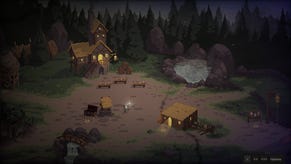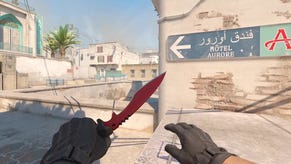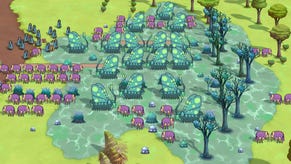Less Is More: Gabe Newell On Game Pricing
There's a lot we don't understand about pricing games. But as more and more evidence pours in, the most common pattern appears to be: the less you charge, the more you make. There are so very many examples of this, from iOS pricing phenomena, to the extraordinary revenue generated by the Humble Bundle pay-what-you-want schemes. Further to this come comments from Valve's boss, Gabe Newell, who recently explained how erratic pricing results can be, but the undoubtable success of offering massive discounts. And perhaps more surprisingly, they seem to have discovered the importance of using the phrase "Free to play".
It seems Valve are constantly experimenting on us. Newell explains how the various offers that have appeared on Steam are as much science as they are capitalism. As reported by Geek Wire, Newell discussed the difference between silently discounting a game, and making a big fuss about a sale. When they quietly lowered prices, they found it to be elastic (sales increase proportionally, so the overall revenue remains the same), but...
"The sale is a highly promoted event that has ancillary media like comic books and movies associated with it. We do a 75 percent price reduction, our Counter-Strike experience tells us that our gross revenue would remain constant. Instead what we saw was our gross revenue increased by a factor of 40. Not 40 percent, but a factor of 40. Which is completely not predicted by our previous experience with silent price variation."
This experiment was successfully repeated with a third party game, and the result is the non-stop flow of heavy discounts you'll now see on Steam. It's no coincidence that the already massively discounted GTA games, being priced at 75% for all of them ever (now £5) is the number one best selling title on Steam.
More peculiar is the discovery of the difference between saying something is "free" and saying it's "free to play". Newell's explanation is not entirely clear, but it seems that the latter implies some greater level of content and long-term support for players. He says,
"The most recent thing that also is really puzzling is that we made products available for free on numerous occasions, without significantly impacting the audience size. We recently said, we’re now going to do something different, we’re not only going to signal that it’s free but we’re going to say, ‘it’s free to play,’ which is not really a pricing signal, even though that’s what you would ordinarily think it is. And our user base for our first product that we made free to play, Team Fortress 2, increased by a factor of five. That doesn’t make sense if you’re trying to think of it purely as a pricing phenomenon.
Why is free and free to play so different? Well then you have to start thinking about how value creation actually occurs, and what it is that people are valuing, and what the statement that something is free to play implies about the future value of the experience that they’re going to have."
And being free to play, rather than simply free, seems to bring with it profit. Newell reports that since TF2 has become F2P, they're seeing a conversion rate of players of 20 to 30 percent, going from getting the product free, to spending money on hats, etc. Why? No one yet knows. As the bossman concludes,
"We don’t understand what’s going on. All we know is we’re going to keep running these experiments to try and understand better what it is that our customers are telling us. And there are clearly things that we don’t understand because a simple analysis of these statistics implies very contradictory yet reproducible results. So clearly there are things that we don’t understand, and we’re trying to develop theories for them."
Make sure to read the rest of Geek Wire's transcription, which also includes thoughts on piracy, and Valve's impressive success in Russia.









